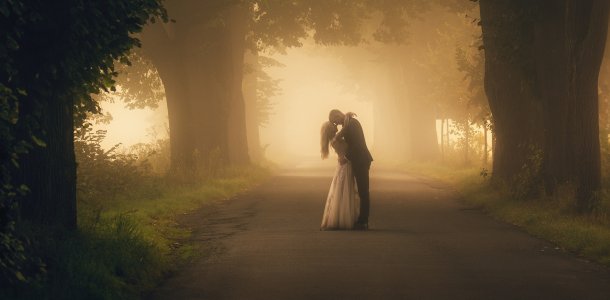1
The village of Karpniki, situated at the foot of the Sokole Mountains, is mentioned for the first time in the 14th century. The Castle, whose history dates back to the 15th century, lies amidst the picturesque scenery of the mountainous landform and the surrounding hills and is connected with distinguished Silesian families. One of the first owners of the fortified building, surrounded by a moat, was Cunze von Predel. In 1476 the old, distinguished Schaffgotsch family took possession of the property. Hans Schoff called Gotsche was the first in the family who became the landlord of the Karpniki property.
2
Apart from Karpniki he also possessed the nearby properties Kamienica and Chojnik. The estate remained in the hands of the Schaffgotsch family until 1580. Possession of the Castle changed hands several times and in 1725 it became the property of the Schaffgotsch family again. After Count Franz Wilhelm von Schaffgotsch died childless in 1774 the Karpniki property passed into the hands of the royal administration, and, three years later in February 1777, it became part of the property of the Krzeszów Cistercian monastery. In 1784 the estate was purchased by Count Friedrich Wilhelm von Reden, and in 1787 Karl Georg Heinrich Count von Hoym is mentioned as the owner, who in turn sold the property to Caspar Conrad of the von Zedlitz family.
3
The Karpniki estate remained in the hands of the von Zedlitz family until 1822, when its last owner Freiherr Otto von Zedlitz und Neukirch sold the property to the King of Prussia` s brother Wilhelm von Preussen and his wife Princess Marianne. It was the Hohenzollern family who made the property famous and had the biggest influence on the present shape of the Castle building. Straight after the purchase of the property, the first renovation works took place. Their aim was to adapt the Castle for the Prince`s family needs.
4
On one side of the courtyard, at the first floor level, a gallery in Neo-Gothic style was erected, thus enabling separate use of enfiladed rooms. Subsequent alterations were made in the forties of the 19th century. Thanks to them, an impression of the romantic Neo-Gothic residence, reflected in the water surfaces of the park`s ponds was achieved. In spite of the alterations, many elements of the original fortified building were preserved, above all the moat and the bridge leading to the Castle`s courtyard.
5
After Prince Wilhelm`s death in 1851 (Princess Marianne died in 1846) the property passed into the hands of their older daughter Elisabeth, who was Prince Karl von Hessen`s wife from 1836. The estate remained the House of Hesse`s private property until 1945. Its last owner was Prince Ludwig von Hessen und bei Rhein, the grandson of Princess Elisabeth and the great-grandson of Princess Marianne and Prince Wilhelm.At those times the property was not frequently visited. The visitors used to come during the summer, and in the autumn hunting events were organized.
6
The picture was taken in the summer of 1869 in the Castle Karpniki inner ward. Princess Elisabeth`s birthday celebrations provided the opportunity for the family to have a small get-together. Among the invited guests were Queen Marie of Bavaria (sister), Prince Adalbert (brother), Großherzog Ludwig IV von Hessen und bei Rhein (son) and his wife Princess Alice of the United Kingdom (daughter of Britain`s Queen Victoria), Prince Karl von Hessen (husband) and the other sons of the Prince and Princess couple, Heinrich and Wilhelm. Walking tours in the nearby area was a favourite pastime for the visitors to Karpniki. A trip to Śnieżka mountain and, interestingly, a visit to the carpets factory in nearby Kowary took place as well.
7
During WWII the Castle was one of the places designated by Günther Grundmann, district art restorer, for the museum repository. Fearing bombing, the last owner of Karpniki, Prince Ludwig von Hessen und bei Rhein took the art collections away from Darmstadt and stored them in Karpniki. Among the assembled works of art was `The Darmstadt Madonna` (also known as `The Madonna of Jakob Meyer zum Hasen), a 16th century painting by Hans Holbein the Younger. From January 1945 the collections were taken away into Germany and hidden from the approaching Red Army.
8
After WWII from February 1946 till 1949 the People`s University had its seat in the Castle. It was the first institution of this kind in the Lower Silesia. The curriculum plan of the 5-months` course aimed at preparing grown-up young people to cultural and educational activity in the rural areas. The students came from the various regions of Poland. Then the building remained empty for a few years. Only in 1956 a Care Home for Children opened here. The first post-war repair works took place only in 1962, among other things, the roof was renovated. The Castle was supposed to serve as a holiday camp but in 1973 its condition was so bad that the inhabitants had to leave.
9
In the following years a few attempts to find a purpose for the building were made, but they all failed. The Castle repeatedly changed its owners and, in spite of many repair and protection works, it gradually fell into ruin. Many acts of vandalism and theft occured. In 1993 the thieves knocked off the Renaissance gate door portal and prepared it to be taken away. Luckily the intervention came just in time, the portal was secured and after conservation it returned to its rightful place. Unfortunately, the process of deterioration continued.
10
In 2009 the Castle with the park and the surrounding land was bought by a development company. The company`s aim was to renovate the Castle and to restore it to its former glory. The President of the Republic of Poland gave Historic Monument title to the Castle, which is the highest form of appreciation for it.
PDF file


